What’s the difference between Scandinavian and minimalist interior design? And can they ever be combined? Scandinavian and minimalist design share some similarities (and definitely look great paired together). However, there are differences that set them apart. From core philosophy and overall feel, to the best value interior doors for both aesthetics, here’s everything you need to know…
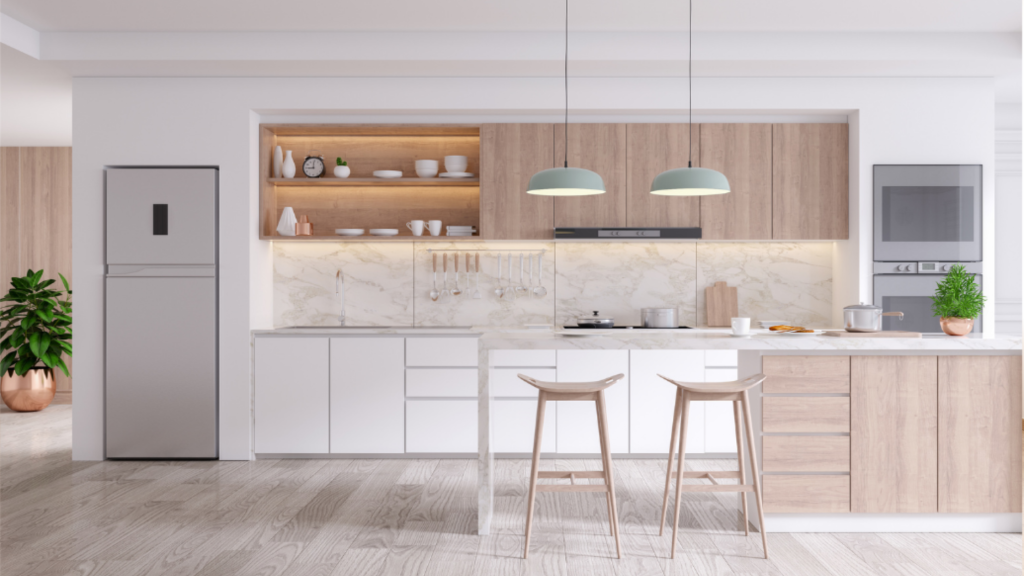
Core Philosophy
Scandinavian design focuses on functionality, light, and creating a cosy, inviting atmosphere. It embraces the concept of “hygge,” which emphasises comfort and well-being. Minimalist design prioritises extreme simplicity and paring down to the bare essentials. The focus is on clean lines, uncluttered spaces, and a lack of ornamentation.
Learn more about Scandinavian interior design and minimalist interior design by reading our dedicated trend reports.
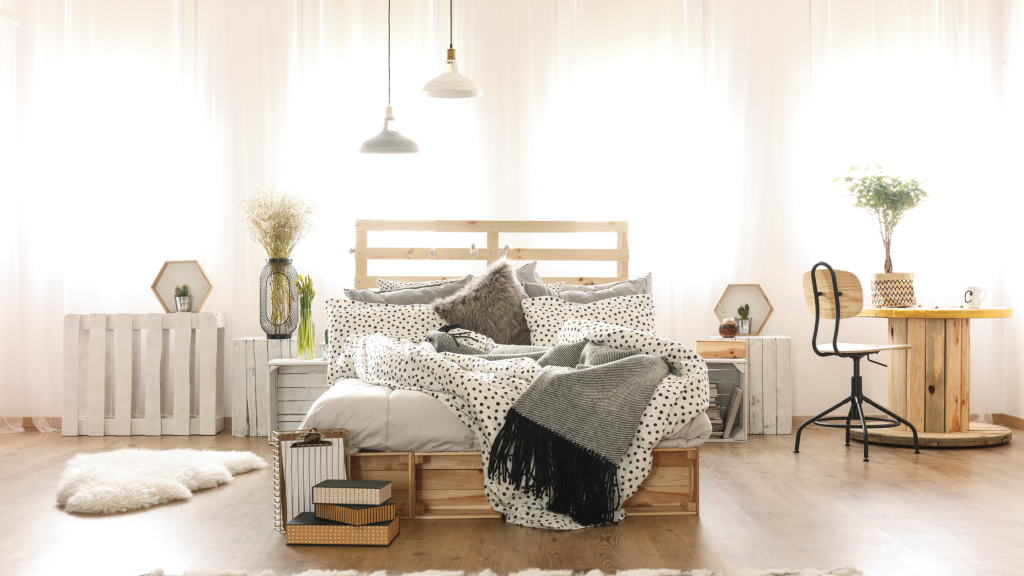
Use of Materials
Scandinavian interior design heavily favours natural and organic materials like wood, wool, sheepskin, and linen. These create warmth and texture. ‘Scandi style’ homes could be seen as more rustic than modern neutral homes. Minimalist interior design opens up a broader range of options, including stainless steel, chrome, glass, and lacquered plastics. The emphasis is on sleekness and a modern aesthetic often inspired by industrial interior design.
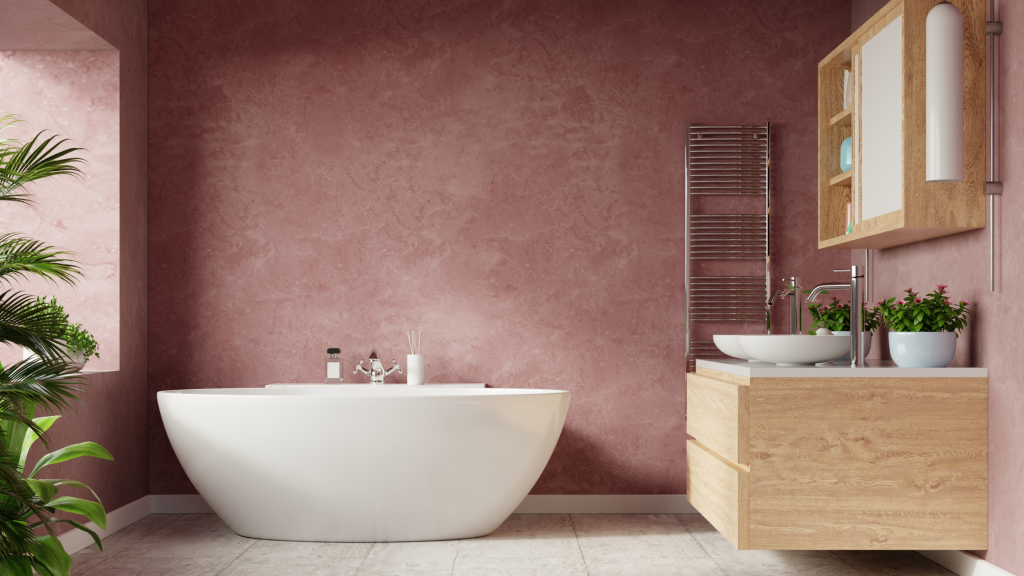
Colour Palette
What are Scandi colours? Scandinavian style homes are light and airy spaces with whites, creams, and light neutrals as the base. Pops of colour are used for accents and personality. Think: blush pink, grey blue and sage green. Shades inspired by the flora and fauna of the natural world.
In contrast, minimalist homes utilise a broader colour palette, including black, white, and neutrals. Bolder tones might be used sparingly but with high impact to draw the eye. Think: teal, mustard yellow, navy blue and vibrant fuchsia.
Learn more about working with a neutral colour palette and find out why a neutral home could help you to feel calmer and potentially boost property value.
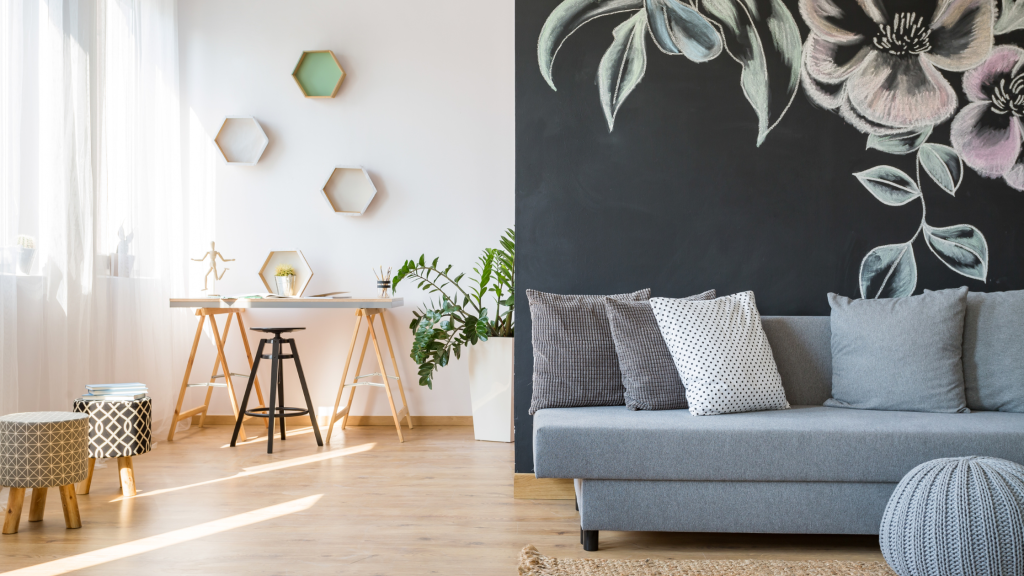
Overall Feel
Scandinavian interiors strike a balance between functionality and visual appeal. The aim is to create a comforting, light-filled space that feels inspired by (and connected to) the natural world.
Minimalist interiors focus on creating a sleek, uncluttered, and sometimes even stark space. The emphasis is on spacious rooms and open plan living feel, even when rooms are separated.
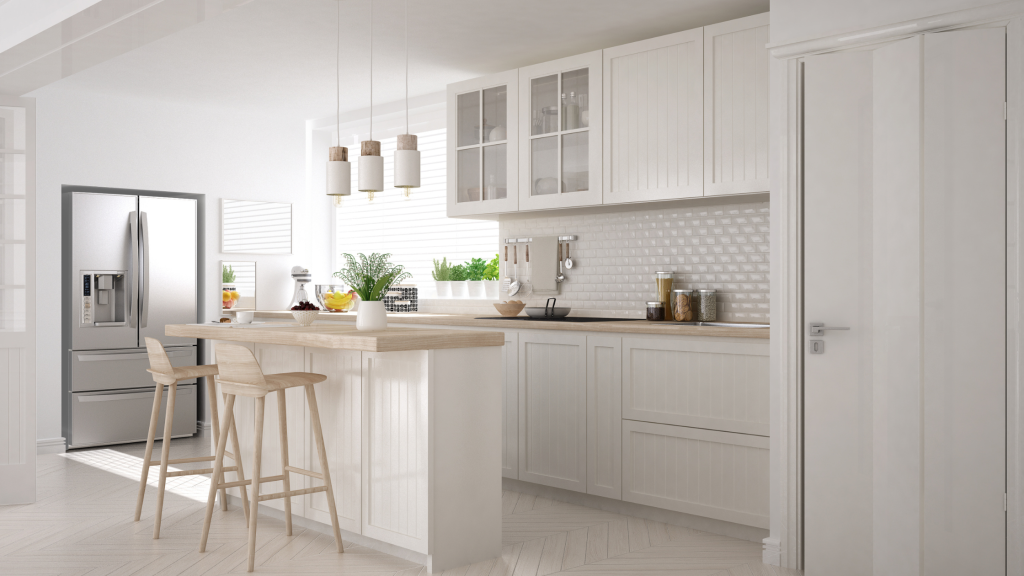
Interior Doors
Versatile white internal doors work well in both Scandinavian inspired homes and minimal homes. This is because they reflect light and help to create the illusion of lighter, brighter, larger spaces. Even in smaller properties.
But what about wooden doors? You might see cottage internal doors or knotty pine doors in Scandinavian homes; these designs are ideal for adding a rustic, natural element. However you’re more likely to see sleeker, more modern designs in minimalist homes. Examples of this minimal design approach include smooth panel doors and Mexicano oak doors which provide a seamless blend of classic and contemporary.
Buy wooden doors online with confidence by using our guide to define different types of wooden doors and their different characteristics.
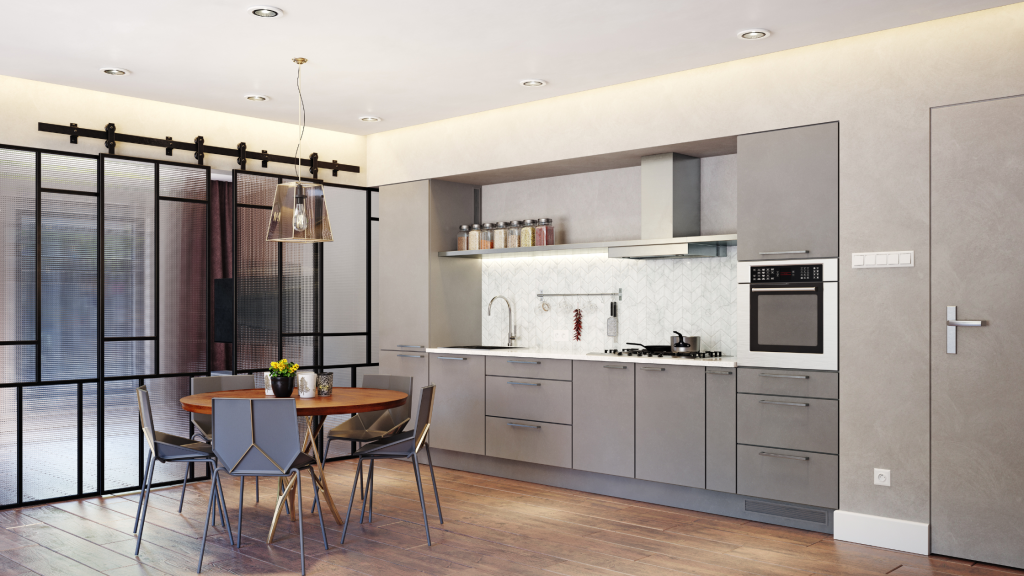
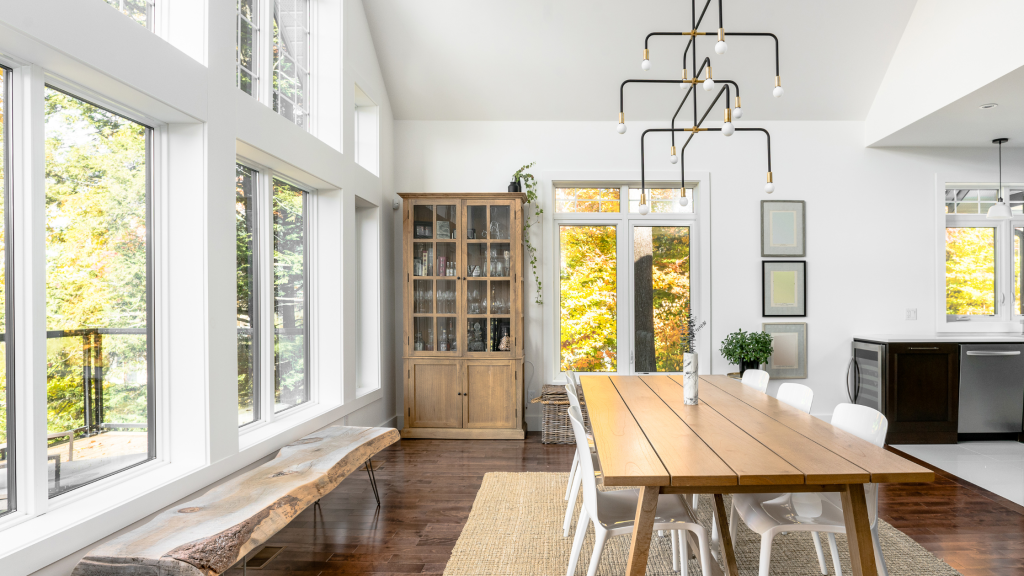
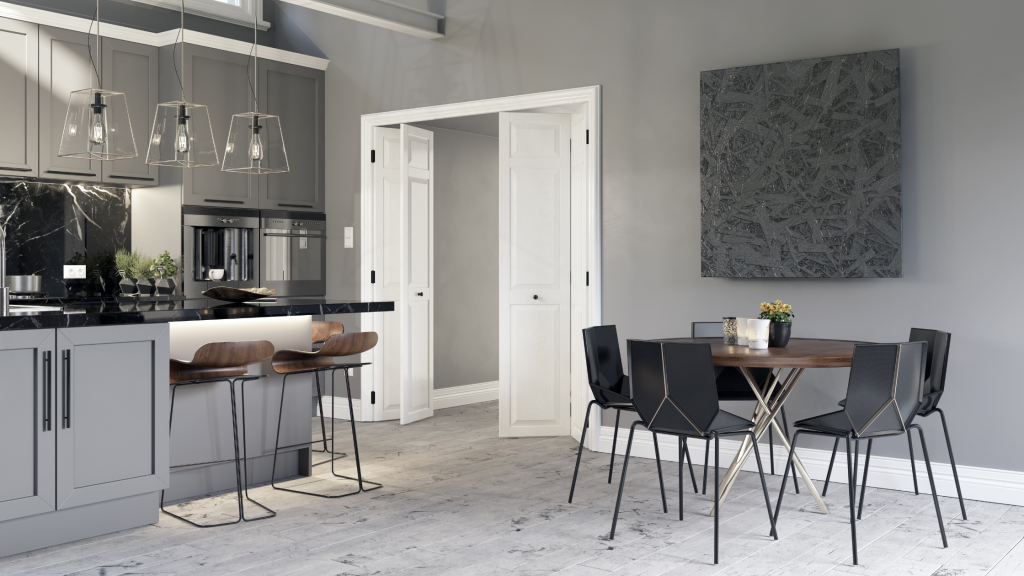
How can I make my home more Scandi?
Spotlight-stealing Crittall style black internal doors should be top of your shopping list.
These doors feature large glazed panels to boost natural light and a striking black frame which contrasts beautifully with a Scandinavian colour palette. And because this industrial-inspired design has an edgier, monochromatic feel it’s ideal for minimal home interiors too.
It also helps to make use of internal bifold doors or room dividers. These help to visually connect rooms for an open plan layout, while ensuring separation. Particularly important for dividing remote working and living spaces so you can truly unwind.
Another option is to invest in sliding pocket doors, single bifold doors or doors with frosted glass. This creates sleeker storage solutions more inline with minimalist design principles.
Find out more about the benefits of pocket doors and get inspired by our trend-driven utility room ideas for a stylish space.
What is Scandi-Minimalist Interior Design?
Scandi minimalism is the perfect blend of Scandinavian design’s cosiness and functionality with the clean lines and open plan feel of minimalism. It’s all about achieving an effortless airiness through a palette of neutral tones.
Furniture follows suit, featuring clean lines and simple silhouettes, often crafted from natural materials. Think: oak internal doors, wool rugs and faux leather sofas. However, Scandi minimalism doesn’t shy away from warmth. Bold and bright tones add personality, while soft textiles and strategic lighting create a sense of contentment.
This interior design style embraces the “less is more” philosophy, ensuring every element serves a purpose and contributes to a calming, clutter-free environment.
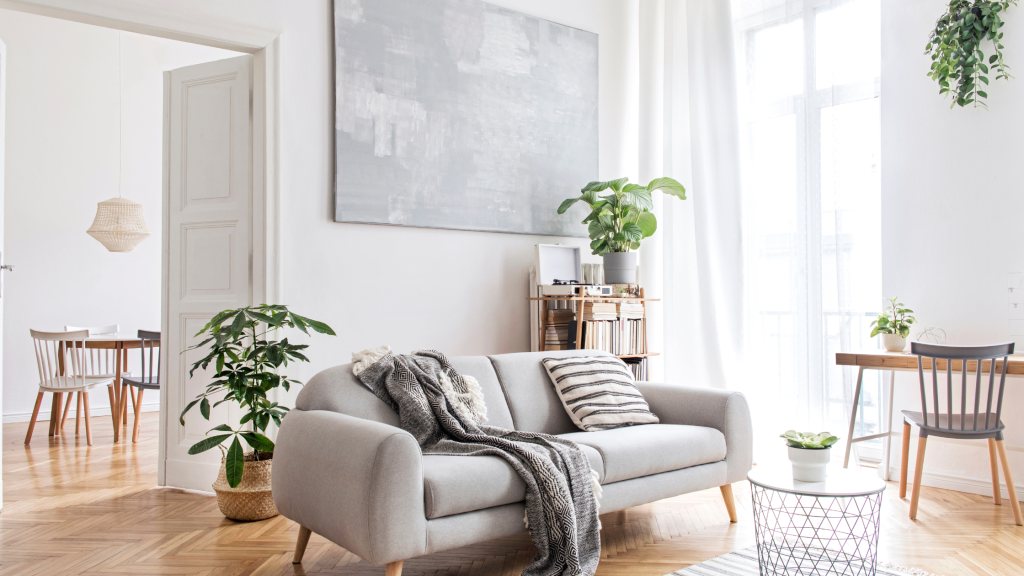
What is the Essence of Scandinavian Design?
The key features of Scandinavian design include simplicity, natural materials (including wood and stone), natural light, rustic textiles (such as wool and sheepskin), functional furniture and a connection to the great outdoors. The overarching design style aims to create a harmonious and comfortable living environment.
Get inspired by the Japandi interiors trend which fuses Scandinavian and Japanese design ideas.
What is the difference between Scandinavian and Warm Minimalism?
Scandinavian interior design could be identified as warm minimalism or ‘earthy minimalism’.
This is a huge interior design trend right now which incorporates some minimalist principles of clean lines and simplicity. However, there’s a specific uniqueness and sense of tactility at play which really defines the core Scandi-style look.
Put simply, it’s a ‘rustic’ and ‘homely’ vibe which sets the true Scandinavian design apart. This comes from infusing elements of texture and comfort through natural materials and a nature-inspired colour palette. Warm minimalism has more of a glossy, refined sheen.
Learn more about biophilic interior design and take a more in-depth look at the recent wellness design trend.
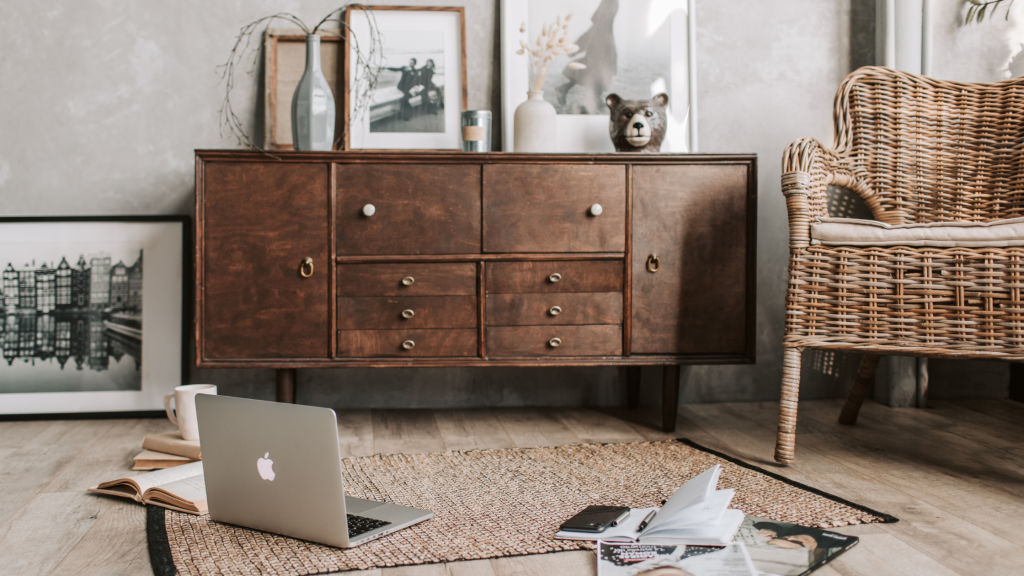
What is the Difference between Scandinavian and Nordic Interior Design?
Scandinavian and Nordic design are often used interchangeably, but there’s a subtle distinction.
Scandinavian design specifically refers to the styles of Denmark, Sweden, and Norway. Nordic design encompasses a broader aesthetic that includes these countries but also extends to Finland and Iceland.
While both celebrate functionality and simplicity, Nordic design embraces more heritage and cultural influences. This might mean darker wood tones, handcrafted elements, or a stronger connection to the rugged natural beauty of the entire Nordic region.
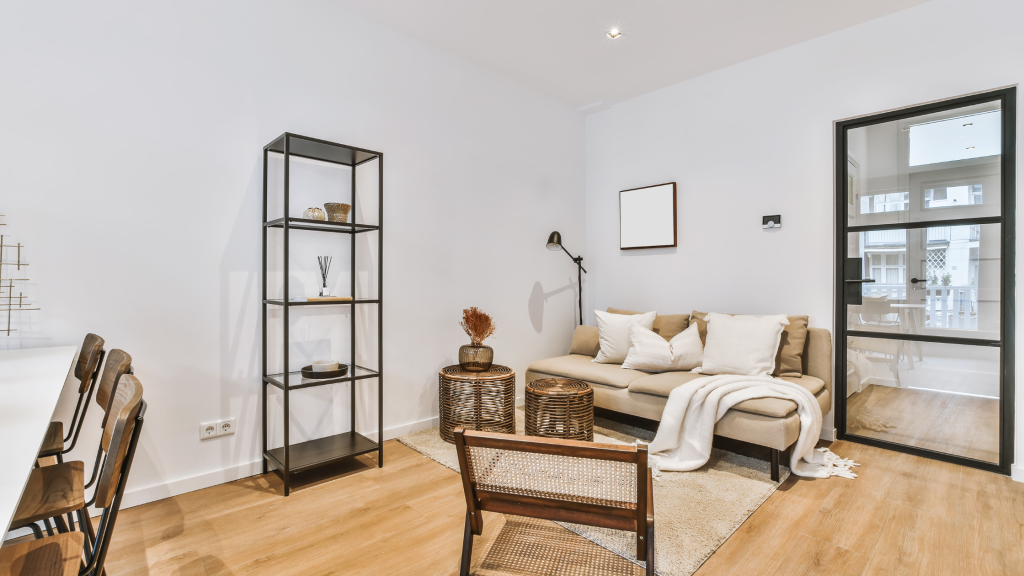
Combine Both Trends for an Elegant Look
Effortless and enduring, one of the biggest benefits of Scandi minimalist interior design is the sense of calm, peace and space it creates. Simply focus on clean lines, open plan spaces, a neutral colour palette and a connection to nature and watch as your project is instantly upgraded.
Looking for Scandinavian interior design door ideas? Shop our stylish and secure internal doors collection online, see more ideas over on our Instagram or contract our team for advice.
 Opanpan Door Skins
Opanpan Door Skins